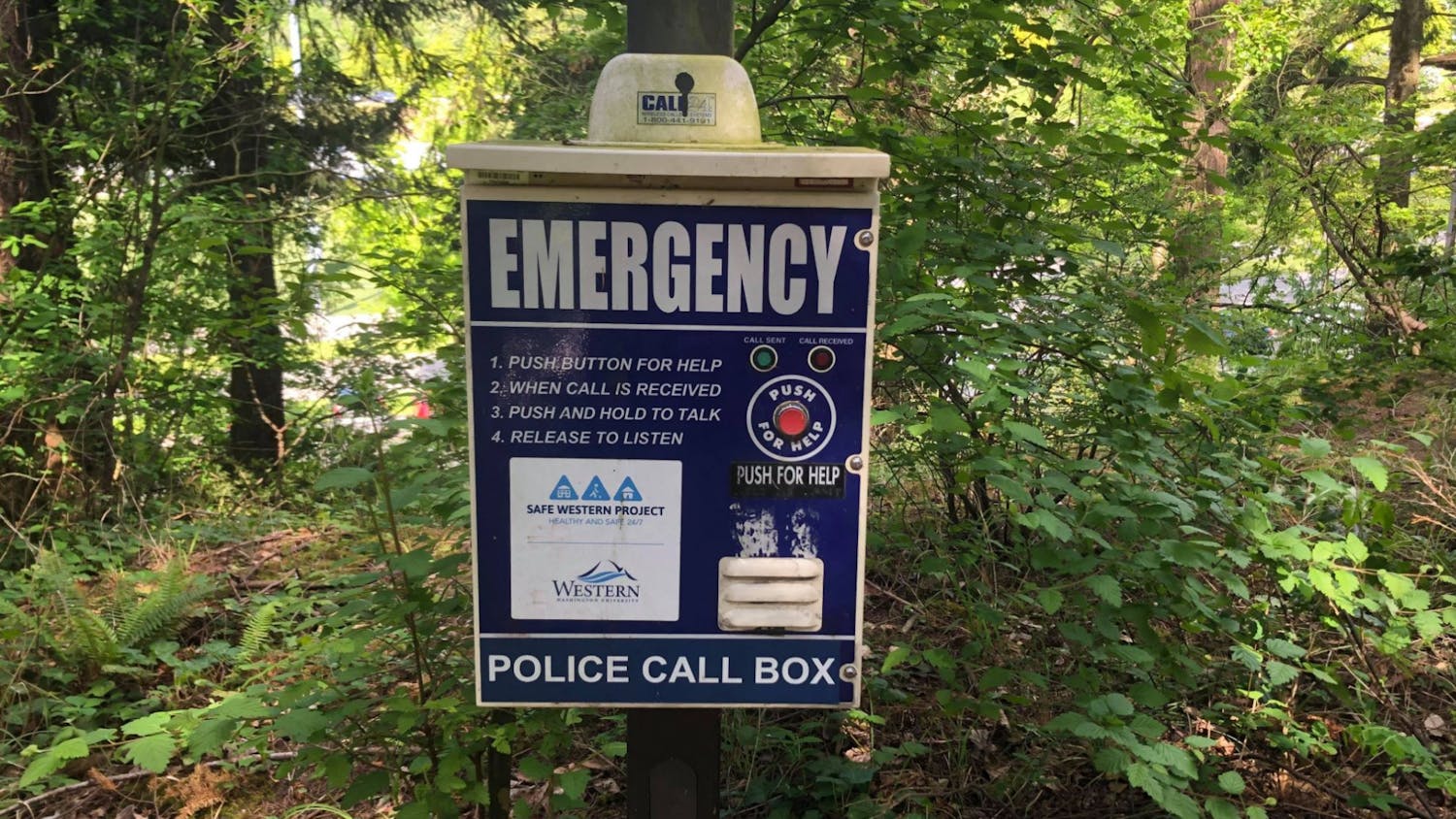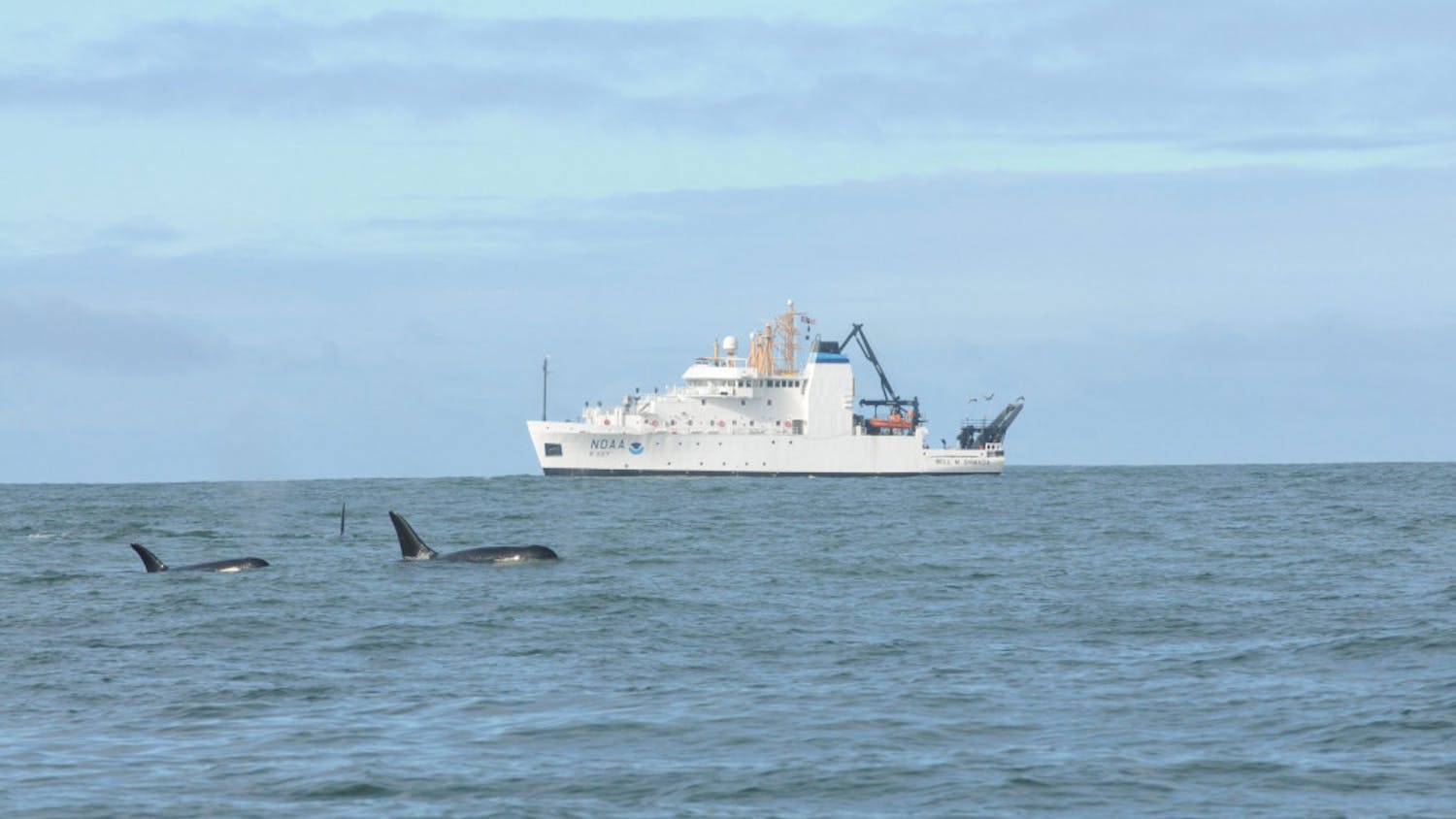
A salmon lies beneath the shade of a stream's bank vegetation, considered safe havens for our ecosystem's corner-stone species. Projects of forest management in Whatcom County raised concern about the amount of protection dedicated to riparian reserves. // Photo courtesy of Ryan Hagerty, U.S. Fish and Wildlife Services, via Pixnio
On March 3, the U.S. Forest Service released its environmental assessment for a new forest management project in Mt. Baker-Snoqualmie National Forest.
Located two miles east of Glacier, the North Fork Nooksack Vegetation Management Project would cut, and in some cases remove, trees in certain areas to improve wildlife habitat, support huckleberry growth, enhance forest stand conditions and contribute to the economy through timber harvest.
Jen Syrowitz, conservation program manager for Conservation Northwest, a nonprofit advocating for environmental interests, said in an email that while the project is needed for forest survival, there needs to be further research and considerations.
“The project is on its way to meeting conservation efforts and ecological objectives in the area, but needs closer examination and greater tribal input prior to implementation,” Syrowitz said.
The community
Over 1,000 Whatcom County residents and organizations have voiced their concerns during the public commenting period for the project, which ended on April 3, 2021. Syrowitz said the community should keep engaging in the decision-making process.
“They know best how these areas are used, and the investments they've made to protect water quality, recreation opportunities and infrastructure in the region,” Syrowitz said. “[Whatcom residents should] Approach the project understanding the need for restoration, with the need to balance actions that benefit fish, wildlife, recreationists, down-stream communities, and local timber industries.”
Based on factors such as forest structure, wildlife habitat, fire history and road density, Syrowitz said the Canyon Creek, Hedrick Creek-North Fork Nooksack River, and Glacier Creek sub-watersheds accounted for in the proposed area have been identified as having high restoration opportunities.
“Overall, this project, if designed and implemented correctly, should help the well-being of the area,” Syrowitz said. “Due to past management practices our forests are in disrepair, suffering from overcrowding, excessive mortality, catastrophic fire risk, disease risk and declining quality wildlife habitat.”
In an open-letter to the Mt. Baker Ranger District, George Swanaset Jr., cultural and natural resources director for the Nooksack Tribe, called for a better understanding of implications for fish populations.
Swanaset said further land use along the streams could impair the recovery of Chinook salmon, steelhead and bull trout populations, whose decline was attributed to habitat degradation.
“We are very concerned about the lack of detail provided on the extent and intensity of the thinning of the Riparian Reserve areas,” Swanaset said.
Riparian Reserves are designated portions of streams and rivers that provide the necessary ecological conditions to create and harbor habitat for aquatic and riparian-dependent organisms over time, as reported by the Forest Ecosystem Management Assessment Team in 1993.
“Our biggest concern with the Draft EA [environmental assessment] is the potential misidentification of Riparian Reserve boundaries,” Syrowitz said. “Accurate identification of these Riparian Reserves is critical to the safe and correct implementation of this project and the achievement of Aquatic Conservation Strategy objectives.”
The alternatives
The U.S. Forest Service outlined two alternatives to carry out vegetation management.
Syrowitz said the first one would leave too much room for aggressive harvest and could open the area to increased risk in a region already prone to large landslides, endangering wildlife and current geologic features.
“Alternative two does a better job at protecting the forest floor and large trees, while still creating needed pre-forest habitat for elk, deer and pollinators, though we still question if riparian areas will be sufficiently protected from the impacts of harvest,” Syrowitz said.
In Western Washington forests, Syrowitz said restoration is commonly carried out through appropriate thinning and harvest which also has economic benefits and income opportunities for local communities.
Tim Hall, owner of Tim Hall Tree Service, said that these operations are usually bid out to private contractors.
“The state has all this land, they lease it out, you buy the permit and then you can go in there and log it but it's a specific type,” Hall said. “Mainly that's the type that’s worth the most money when they're doing large pieces.”
Syrowitz said it is the location, volume, distribution and timing of the harvest that must be thoughtfully planned and implemented.
“The proposed thinning and gap cutting appears focused on meeting the stand characteristics and habitat values for terrestrial species and connectivity, but lacks a focus on maintaining water quality and habitat for the aquatic organisms associated with the riparian zone,” Swanaset said.
The impacts
While literature on the impacts of riparian thinning on habitat and water quality is limited, Swanaset said the effects of like-measures can have persistent negative impacts on streams.
Swanaset said removing conifers was part of the proposed measures in the environmental assessment to allow hardwoods and brush to provide shade for the water streams.
“Cottonwoods, alders, birch, maple, they tend to grow and plant more easily, just because of the way seeds work and the way they break down,” Hall said. “But fir trees and conifers, evergreens are more dominant.”
According to the American Conifer Society, evergreens dominate Pacific Northwest forests because they can produce food during the mild winters and sustain summer droughts, when deciduous trees suffer from summer dryness and cannot compensate by photosynthesizing in the other three seasons.
“These are shorter-lived species that cannot provide many of the riparian functions, such as large wood, needed for streams,” Swanaset said. “The treatment needs to look at the variety of riparian functions described in the NW Forest Plan and ensure that these are not impaired.”
Temperature monitoring across forest lands has shown that nearly every stream in the Nooksack Basin exceeded the water quality standards set by local directives, according to a study by the Nooksack Tribe Natural Resources Department in 2018.
“The project should be consistent with regional and local climate change adaptation plans,” Swanaset said. “Recent assessments of the status and trends of Chinook habitat in the Nooksack Watershed shows that land use is continuing to degrade habitat conditions in the watershed.”
Swanaset said it will be important for the forest to naturally implement a monitoring and adaptive management plan to ensure that goals are reached and there are no negative impacts.
The takeaway
Travis Cram, an assistant professor at Western and also a self-proclaimed “(mildly) obsessed fly fisher,” said in an email that he supported efforts to restore habitat access and quality for native and wild fish like salmon, steelhead and coastal cutthroat trout.
“Restored habitats do help a lot in my experience, but it also depends on the species of fish and the nature of the restoration,” Cram said. “Restoring plant life can help stabilize banks, manage sediments, and provide shade and cover.”
Cram said these habitat improvements could give the fish deep cover from predators, holding water to rest and feed and improve spawning conditions, but past practices had not always honored the shared nature of fishing resources in Washington state.
“A lot of land use and management practices that have been dominant for the past several decades do not always reflect the best science that balances use of a resource with the need to conserve it for the future,” Cram said.
“Management tactics that can help ecosystems heal and adapt and support healthy fisheries are generally win-win if they are adequately supported,” Cram said.
The North Fork Nooksack Vegetation Management Project is currently under analysis with the objection period slated to start May 1.
Clifford Heberden (he/him) is the City News Editor for The Front. He’s a third year News/Ed major planning to minor in Philosophy. With his reporting, he’s mainly focused on local and state-wide environmental news and legislation but has also worked to report on social issues in Whatcom County. You can reach him at citynewseditor.thefront@gmail.com or chbrdn.thefront@gmail.com.
His Twitter handle is @cliffbutonline.





